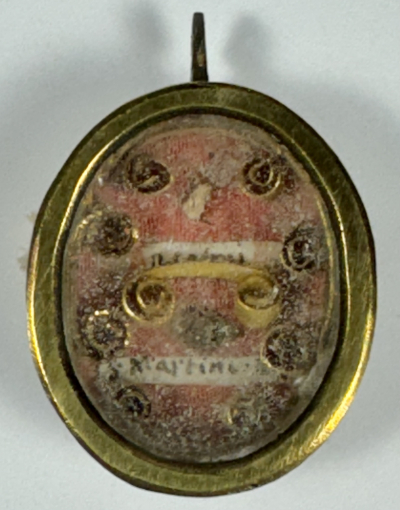Saint Anselm of Canterbury (†1109), (also called Anselmo d'Aosta and Anselme du Bec) was an Italian Benedictine monk, abbot, philosopher, and theologian of the Catholic Church, who held the office of Archbishop of Canterbury from 1093 to 1109. As archbishop, he defended the church's interests in England amid the Investiture Controversy. For his resistance to the English kings, he was exiled twice. While in exile, he helped guide the Greek bishops of southern Italy to adopt Roman rites at the Council of Bari. He worked for the primacy of Canterbury over the bishops of York and Wales but, though at his death he appeared to have been successful, Pope Paschal II later reversed himself and restored York's independence. Anselm's canonization was requested of Pope Alexander III by Thomas Becket at the Council of Tours in 1163. He may have been formally canonized before Becket's murder in 1170 but his cult was only formally sanctioned by Pope Alexander VI in 1494. Anselm was proclaimed a Doctor of the Church by Pope Clement XI in 1720; he is known as the doctor magnificus ("Magnificent Doctor") or the doctor Marianus ("Marian doctor"). His feast day is 21 April.
Saint Martin of Tours (†397) was the third bishop of Tours. A native of Pannonia (present-day Hungary), he converted to Christianity at a young age. He served in the Roman cavalry in Gaul, but left military service prior to 361, when he became a disciple of Hilary of Poitiers, establishing the monastery at Ligugé. He was consecrated as Bishop of Caesarodunum (Tours) in 371. He is best known for the account of his using his sword to cut his cloak in two, to give half to a beggar clad only in rags in winter. His shrine in Tours became an often-frequented stop for pilgrims on the road to Santiago de Compostela in Spain. He is the patron saint of many communities and organizations across Europe, including France's Third Republic. His feast day is commemorated on 11 November by the Catholic Church and on 12 November by the Eastern Orthodox Church.








 Поменять язык на русский
Поменять язык на русский 